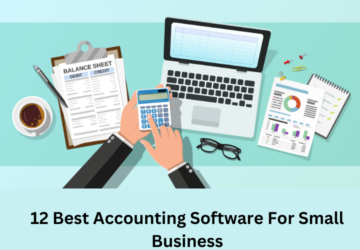Did you know that eCommerce sales are projected to grow by 10.4% in 2023? That’s pretty exciting news if you plan to start an online store this year. Starting an online retail business may feel overwhelming, but by building a solid foundation, it can be an exciting and lucrative venture. We’ll take you through some of the basics you’ll need to know to get your online store off the ground, from choosing your niche to getting processes in place and marketing your business. By the end of this article, you’ll know exactly how to start an online store, so let’s dive in and get you on your way to building your business!
How To Start an Online Store in 5 Steps
1. Find a Profitable Niche
When you start an eCommerce business, tapping into a profitable niche is essential for long-term success. Here is how we suggest you find the best niche to sell in:
Find a niche with passionate buyers
Try tapping into a niche with an established community of passionate, engaged buyers eager to purchase what you’re offering. There is often an emotional connection to this type of niche, such as baby goods, health products, or beauty items.
Make sure the product is in demand
Nothing is more demotivating than when you start an eCommerce business only to struggle to make sales. You need to find products that are in high demand to sell consistently. To find the search volume for search terms related to your products, you can use keyword research tools like Google Trends.
Consider the competition
Take a look at who you will be up against in your chosen niche when starting an online retail business. If there is already a lot of competition, you’ll need to find a way to differentiate yourself, which could translate to offering better customer service, putting a unique spin on the products, or more competitive pricing strategies.
Below are additional practical tips for finding a product that can be applied to whichever marketplace you choose to sell on:
Source: DollarSanity
2. Select Your Sales Channels
When it comes to understanding how to start a clothing business online, it’s vital you choose the right platform to sell through. You can use several sales channels to sell your products or services online when starting an online boutique, the most common being your own website or online marketplaces. In our experience, when you are just starting out, you will find more success selling via online marketplaces like Amazon, eBay, and Etsy than through your own unknown website.
Online marketplaces offer built-in audiences, a user-friendly storefront, marketing tools, and sometimes even pre-paid shipping labels to make getting started with selling online a breeze.
To choose which marketplaces you’ll sell on, you can check out reviews of online marketplaces, such as this Vinted review.
3. Develop a Marketing Strategy
If you hope to succeed online, you can’t just list items and hope you’ll make sales without promoting them. The eCommerce space is competitive, and you need to find ways to stand out and connect with your customers. To build your strategy, check these off your to-do list:
Define your target market
Who are you trying to reach with your products or services? What are their needs and wants? Do they face any challenges your product can help them overcome? How can you best reach them?
Research your competition
What are they doing well? What could they improve upon? How can you differentiate yourself in the market? What channels are they on?
Choose your marketing channels
Many options are available, from online advertising to offline methods like print or radio ads, direct mail, or even event marketing. Regardless, only select the channels that your target audience engages with regularly.
Develop a budget
Marketing can be costly, so it’s essential to set a budget so you don’t overextend yourself financially. Determine how much you’re willing to spend on each channel and each campaign, and keep a close eye on your Return on Ad Spend (RoAS).
Create catchy headlines and compelling copy
Your goal is to get people’s attention and persuade them to learn more about your product or service. Make sure your headlines are attention-grabbing, and use clear, concise, and persuasive messaging. Keep SEO best practices in mind by naturally incorporating keywords related to your products in not only your marketing copy but your listing titles and descriptions too.
Follow the Walmart Sales Strategy
Instead of charging high prices and selling fewer units, Walmart sales strategy has always been to offer customers value for money with competitively priced products and bulk discounts. You can emulate this in your own online store by pricing competitively and offering bundle deals.
4. Make Continuous Improvements
As your eCommerce business grows, it’s important to look for ways to improve continuously. Whether streamlining your shipping process or finding new ways to reach more customers, making ongoing improvements will help you scale your business and stand out from your competitors.
Evaluate your current processes and identify areas for improvement
Take a close look at all the processes involved in running your e-commerce business and identify any areas that could be improved, streamlined, or automated.
Stay up to date on industry trends and best practices
By keeping up to date with industry trends, you’ll be able to identify new opportunities in your niche or tap into entirely new markets.
Make use of data and analytics
Data is truly your best friend as a business owner. It is a powerful tool that can help you identify areas to improve on, learn what you’re getting right and help you save money by eliminating things that no longer work. Collect data on everything from customer behavior to search terms and social media engagement, then use analytics tools to spot trends that can guide your improvement efforts.
5. Stay Flexible
When starting out in eCommerce, or any business for that matter, it’s important to remain flexible. Things will inevitably change and go wrong somewhere down the line, so it’s necessary to be agile.
1. Don’t get too attached to your plans – be prepared to change course if necessary.
2. Be open to feedback from customers and employees – they can help you improve your operation and offering.
3. Be willing to experiment – take risks by trying new things and see what works best for your business.
4. Stay organized and keep track of what’s working and what isn’t so you can make changes as needed.
5. Have a backup plan for everything – you never know what will go wrong (e.g., shipping, customer complaints, low inventory, etc.)
Closing Thoughts
Starting an eCommerce business should be fun and exciting, so don’t allow yourself to feel overwhelmed or afraid of taking the leap into entrepreneurship. While it does come with some challenges, by laying a strong foundation, you can build a sustainable and profitable business in no time.







